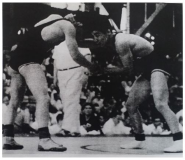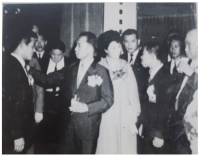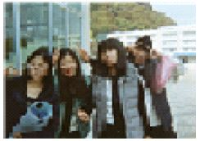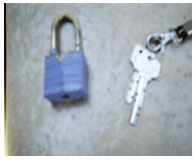Purpose This study is a phenomenological research which tries to describe the subjective experience and to analyze multi-layered meanings, and it finds out the men's training experience and meaning. The purpose of this study is to investigate why the men do Yoga and what the subjective meaning of Yoga experience, and the study examines critically whether Yoga experience especially focused on women is against gender performance and dominant body discourse. Methods For the study, 6 middle & young-old aged men who do Yoga more than 6 months every week are selected as participants. Results The meaning of Yoga for middle & young-old aged men in their lives is as follows. First, it is hard for men to experience Yoga because of social and cultural background. Finding Yoga class which takes men's membership is difficult. Second, middle & young-old aged men's physical feature(interest in their health and disease) and personal background(women friendly daily life) become specific motivation to overcome the barrier to do Yoga. Third, Yoga is 'alterative training', not a training. Yoga is considered as a training which replaces the feature of training called men's sports previously. Fourth, Yoga has a meaning of 'healing' to have our own time. Fifth, Yoga is changed by itself in Yoga culture which is focused on women even though middle & young-old aged men do Yoga for a long time. Sixth, middle & young-old aged men realize that the feature of Yoga is not 'for only women', and they thought it is 'neutral training that men can do too.' Conclusion Consequently, the reason why middle & young-old aged men do Yoga is started from the motivation regarding physical characteristics and personal background, and the main purpose is to cure and to heal our bodies and mind. For them, Yoga means 'alternative training to fit their bodies' and 'their own time'. Moreover, old male adult's training experience and meaning are against gender performance in that it cause a crack in stereotyped gender sports area, but it is notable that there is no intention to resist the dominant gender body discourse.

[Purpose] The purpose of this study was to investigate the process of Jang Changsun’s winning gold medal in the 1966 Toledo World Amateur Wrestling Championship and its meaning. [Methods] Jang Changsun and Katsumura Yasuo who had competed with Jang Changsun for the gold medal were selected as participants, a player and an executive who had participated in the Championship were selected as informants. Data had been collected by in-depth interview were analyzed firstly by using the Patton(1991)’s data analysis method, and the following conclusions were obtained by comparing with preceding studies, press releases, reports etc. [Results] Jang Changsun won a gold medal through the three stages of desperate struggles. The first struggle was to loose weight. Jang Changsun lost three times more weight than other players through fasting treatment, intensive training and dehydration in order to secure an advantageous position in the competition. His second struggle was the sparring itself. He made his mind to win gold medal 2 years before the Championship and started to strengthen his physical fitness and polish up his techniques to fight with strong players from powerful nation of wrestling. He finished the sparring by winning 4 games and tieing 2 games resulting in the same deduction points with Katsumura. It was inevitable for him to fight desperately to lose weight again to get gold medal. He eventually won the gold medal by losing his weight until he fainted because of injuries and serious dehydration. [Conclusion] The first gold medalist Jang Changsun contributed a lot to development of Korean sports by offering chance to consider significance of improving elite player’s exercising environment, scientific coaching, gaining self-confidence to win medal, and realizing the importance of sports informations.



Recently, there have been diverse types of physical activities supported by government policy in S. Korea. However, these activities may not be effective if they do not reach to moderate to vigorous level. This study designed school physical education system based on SPARK program, which include traditional physical education, sports club based physical activity, after school physical activity, and Saturday physical activity, to evaluate its effectiveness associated with physical fitness and empirical meanings of physical activity. This study employed a mixed method research paradigm for better understanding. Among various mixed method paradigm stances, this study employed "blending strategy" for complementary analysis. First of all, the effectiveness in health condition was evaluated by quantitative data. Specifically, physical fitness and lifestyle were analyzed by Helmas, IPAQ, and Accelerometer respectively. Second, empirical meanings of physical activity were analyzed by both Photovoice and in-depth interview which are qualitative research method. The result of this study first showed that a specially designed school physical activity program based on the SPARK contributed to improve students' physical fitness and lifestyle as well, however, there were important differences between male and female students. Second, physical achievement, alteration of spatiotemporal meaning, and change of societal relationship emerged as important themes. Further, these themes showed that they played an important role to maintain students' motivation in physical activity and consequently physical activity promotion was invigorated in school. Based on these results, we synthesized investment factors and process factors and outcome factors respectively. Finally, we suggested alternative teaching methods and suggestions for following research to overcome gender issues.










PURPOSE This study aimed to investigate user perceptions regarding the mobile healthcare application of public health centers by using big data. METHODS The study data included 1,089 users’ reviews (from September 27, 2016 to December 23, 2021), which were analyzed using Python, Textom, KrKwic, UCINET 6, and the Net-draw program. RESULTS First, the evaluation of the application showed a higher number of “Good” responses (677 times) compared to “Bad” (329 times) and “Normal” responses (83 times). Second, network structures related to “Good” were “Like,” “Health care,” “Help,” “A sense of purpose,” “Grateful,” “Diet management,” “Exercise management,” “Easy,” “Recommendation,” “Satisfaction,” “Diet,” “Useful,” and so on. Third, network structures related to “Bad” were “Execution error,” “Request improvement,” “Question,” “Slow speed,” “Interlocking error,” “Lack of food type,” “Login error,” “Inconvenience,” “Delete and reinstall,” “Update error,” “Irritation,” “Connection error,” “Problem occurred,” “Direct input request,” “Not available,” “Waste of stars,” “Lack of function,” “Not enough,” “Stuffy,” “Lack of exercise,” and so on. Fourth, as a result of structural equivalence analysis, four clusters appeared: cluster 1 (negative function), cluster 2 (negative emotion), cluster 3 (positive function), and cluster 4 (positive emotion). CONCLUSIONS It is necessary to respond quickly in order to reflect on the users’ reviews, and active efforts are required to improve the program quality so that users can use it conveniently.
Purpose The purpose of this study was to examine athletes’ psychological competition experiences. Methods For this study, 64 student athletes, attending universities located in Seoul and Chungcheongbuk-do, participated in the study by completing an unconstructed questionnaire. The data were analysed through content analysis method. Results As a result, 15 themes, such as morale loss, comparable performance levels, opponent irritation were collected and the themes were classified into three categories including objectives of psychological competition, requirements of psychological competition, and psychological battle. In match situations, athletes attempt to psychologically compete in order to achieve objectives such as opponent’s morale loss, induce carelessness, trigger agitation and anger, dispersion of attention, and distraction. Psychological competition among rivals is valid when the requirements, such as comparable performance levels, sensitivity to match situations, strong tenacity and confidence, understanding of opponent and oneself, mutual checks and balances, are met. Athletes attack and defend to win the psychological competition by utilizing opponents irritation, information distortion, unexpected behaviors, predicting and coping, pulling a poker face, exclusion of opponents, and self-focusing. Conclusion This study created a theoretical foundation for a profound understanding of athletes’ psychological competition, which is often found in sport fields. Furthermore, this study is meaningful in that it has raised a chance of interest concerning psychological interaction between players in match situations.
PURPOSE This study examined Julsil impact on self-management and the moderating effect of achievement goal orientation in adolescent male athletes. METHODS Adolescent male athletes (n=248) registered with the Korean Sports & Olympic Committee participated in a survey. After exclusion of data from seven respondents who provided insincere responses, 241 responses were used for the final analysis. After verification of the measurement tool’s construct validity, technical statistical analysis and correlation analysis were performed. Finally, multiple regression analysis and PROCESS Macro (Model 1) were used to verify the research hypothesis. RESULTS 1) Male adolescent athletes’ Julsil and 2) task goal orientation had significant positive effects on self-management,, but ego goal orientation did not. 3) The moderating effect of task goal orientation on the relationship between Julsil and self-management was significant, but that of ego goal orientation was not. CONCLUSIONS 1) Male adolescent athletes’ Julsil and 2) task goal orientation had significant positive effects on self-management,, but ego goal orientation did not. 3) The moderating effect of task goal orientation on the relationship between Julsil and self-management was significant, but that of ego goal orientation was not.
PURPOSE This study aimed to verify the relationship between adolescent athletes’ julsil, competitive trait anxiety, and self-management. METHODS A total of 370 adolescent athletes who were registered with the Korean Sport & Olympic Committee participated in the survey; 24 insincere responses were excluded from the analysis, leaving a total of 346 participants. After verifying the construct validity of the measurement tool used in the survey, statistical and correlation analyses were performed. The research model was subsequently verified using structural equation modeling. RESULTS Adolescent athletes’ julsil had a significant positive effect on self-management but not on competitive trait anxiety. In addition, self-management was found to have a significant negative effect on competitive trait anxiety, and also completely mediated the relationship between julsil and competitive trait anxiety. CONCLUSIONS Adolescent athletes’ julsil does not increase competitive trait anxiety, but rather plays a role in reducing it by increasing self-management. These findings unveil mechanisms through which julsil can be used to enhance athlete performance.
PURPOSE The purpose of this study was to verify the mediated effect between self-presentation, stress coping, and competitive state anxiety among domestic elite athletes and to identify the intermediate effects of stress coping in the relationship between self-presentation and competitive state anxiety. METHODS The study was conducted with 259 elite athletes. The relationship between self-presentation, stress coping and competitive state anxiety was verified using the SPSS and AMOS. RESULTS The results of this study were as follows. First, Self-presentation affected positively on stress coping. Second, Stress coping affected positively on competitive state anxiety. Third, Self-presentation affected positively on competitive state. Lastly, stress coping mediated significantly the relationship between self-presentation and competitive state anxiety. CONCLUSIONS The result of this study shows that the competitive anxiety of elite athletes depends on the meaning of self-presentation, and the stress coping is deeply related to competitive state anxiety. In conclusion, it was determined that it provided basic data to understand the competitive state anxiety of players in various ways.

Purpose The purpose of this study was to confirm and evaluate the assessment of dehydration, whole body sweat rate, sweat sodium · potassium concentration, and fluid intake during workout in college badminton and rugby athletes using the field sweat test. Methods 14 male badminton athletes and 17 male rugby athletes were measured during an usual training session in a typical environment. USG(urine specific gravity) was measured before the start of training. Whole body sweat rate, sweat sodium·potassium concentration, and fluid intake were measured during and post a session of training. Results USG higher than 1.023 in both groups, which was considered as dehydrated. Sweating rate were 1.037±0.315L/h for the badminton athletes and 1.987±0.386L/h for the rugby athletes. The concentration of sodium and potassium were 53.6±20.2mmol/L, 4.1±0.7mmol/L for badminton athletes, and 55.6±15.2mmol/L, 4.3±0.5mmol/L for rugby athletes, respectively. The loss of sodium and potassium were 1.02±0.48g, 0.08±0.02g for badminton athletes, and 1.95±0.52g, 0.15±0.03g for rugby athletes, respectively. Conclusions In this study, a standard protocol of field sweat test was suggested as a useful factor in evaluating athletes' hydration status and electrolyte loss during a routine in-door or out-door training session. And, it is expected to build reliable data to establish a standard hydration guideline for Korean athletes.

PURPOSE This study identified a company sports club’s dual characteristics— both for leisure activity and as an extension of work—to provide comprehensive interpretation and understanding of such clubs. METHODS A qualitative case study design was employed, incorporating in-depth interviews, nonparticipant observation, and supplementary data collection from 25 office workers who had participated in an in-house sports club for at least one year. RESULTS Participants reported a wide spectrum of motivations, from voluntary motives such as stress relief and health improvement to more obligatory or organizationally driven motives, including pressure from supervisors or colleagues and expectations related to performance evaluations. The club offered both team sports—which fostered teamwork and a sense of belonging—and individual sports—which offered personal development opportunities. However, some participants experienced blurring of work–leisure boundaries and reemergence of hierarchical organizational culture, leading to conflict and fatigue. CONCLUSIONS Overall, Although company sports clubs have become a welfare program that provides employees with opportunities for leisure and self-development and promote inter-departmental communication and collaboration, they also carry the latent risk of imposing additional burdens and pressures on employees. These findings underscore the need for refined operational strategies and institutional improvements to mitigate negative outcomes and maximize such programs’ original intent.